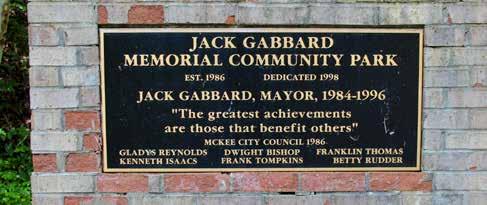




PRTC’s commitment to Eastern Kentucky

By Shirley Bloomfield, CEO NTCA–The Rural Broadband Association
In Washington, D.C., we often talk about the new grant programs that are going to help bridge the digital divide in our country. But I want to highlight what I believe has been the most successful rural broadband initiative, the federal Universal Service Fund. So, what is the Universal Service Fund? The Communications Act of 1934 included language that said all Americans should have access to “rapid, efficient, nationwide communications service with adequate facilities at reasonable charges.” Today, the USF is the main federal program helping rural consumers connect to services comparable in price and quality to those in urban areas. This makes services more affordable for low-income families and supports critical connections for schools, libraries and health care facilities in rural communities by offsetting the high cost of building and managing rural communications networks.
There is one big difference that sets the USF apart from many of the new grant programs: The USF not only supports the construction and deployment of networks but also the maintenance of those networks. It helps ensure that these networks are maintained and sustained so Americans continue to make use of broadband long after the last shovel is put down.
An NTCA survey found that without the High-Cost USF program all rural consumers will pay at least $100 more per month for their broadband service. And the viability of some rural broadband networks would be at risk, as the operations costs and repayment of the loans needed to build them cannot be covered.
NTCA is committed to efforts to preserve the USF so that the mission of universal service for all Americans can be fulfilled.
Each month Nielsen, a company that has long tracked viewership habits across a range of media, updates The Gauge. The report offers a snapshot of how various forms of media are consumed to create a picture of the media landscape.
Several key trends shaped the streaming results, such as June marking the end of the school year and start of school breaks, which led viewers 17 and younger to drive the largest upticks in TV usage across all ages.
As a result, this June streaming topped the earlier viewership record set by cable for that month in 2021.



9.9%
8.4% Other streaming: 6% Prime Video: 3.1% Hulu: 3% Disney+: 2% Tubi: 2%
Roku Channel: 1.5% Max: 1.4% Peacock: 1.2%
1.1% Pluto
0.8%
Source: Nielsen The Gauge







About two-thirds of Americans rely on some form of contact lenses or glasses to correct nearsightedness, farsightedness and more. Then there are eye injuries and diseases like glaucoma that can diminish sight, and the inevitable process of aging can also cause a slow decline in eyesight.
In an increasingly online world—where vital information is often communicated using text on screens—people with diminished vision can struggle. However, there are resources available to help those with impaired sight, and even blindness, interact online.
For example, the Americans with Disabilities Act requires all websites to be accessible to everyone. While not every website is ADA compliant, sites for government agencies, banks and larger organizations are. The basic tools you need are free and as handy as web browsers like Chrome, Edge, Firefox and Safari.
BROWSER BY BROWSER
Microsoft’s Edge browser scores well for assistive technologies. It lets users













increase the size of text and get image descriptions for screen readers. Also, a simple keyboard command—Ctrl+Shift+U on PCs and Shift+Command+U on Macs—signals the browser to read the current webpage aloud. Most other browsers require users to go into system preferences or use an extension for screen readers.
Meanwhile, Chrome’s TalkBack screen reader adds spoken, audible or vibration feedback to your device. While the browser does not have a way to change the look of text, it does have extensions that allow users to customize their browsers to control visual clutter.
Google, the maker of Chrome and a popular search engine, has an awardwinning disability employee resource group and says it is committed to hiring employees with disabilities. That commitment also helps it find ways to make its site more accessible.
Like Chrome, Apple’s Safari comes with its own screen reader, VoiceOver. Users can choose the voice they find most pleasing and set the speech speed. It also lets users increase contrast, zoom in and
remove ads and distractions.









Firefox allows users to adjust the settings so every site has the same font, type size and color to enhance the ease of reading. It also has extensions for changing text to speech and making bookmarks larger, among other things.
While users may need a sighted person to set up the assistive features, modern technologies unlock the world to more people than ever.
If you venture into the world of social media—and most people do— you’ll cross paths with personalities known as influencers. From social media platforms like Facebook and X to video sites such as YouTube and TikTok, online personalities have the power to generate attention. With attention comes income, often six figures or more.

KEITH GABBARD Chief Executive Officer
These people, and they can range wildly in accuracy and professionalism, seem to touch on every possible topic: lifestyle, health, politics, sports, entertainment and just about anything else. They can attract millions of eyeballs, and some of the largest, most visible companies advertise on their channels.
I don’t mean to imply this is a new trend. It’s not, at all. However, as other types of media fall more into the background, online influencers continue to have greater reach and, well, influence. But in our busy and often highly online lives, we shouldn’t lose sight of the other influencers around us. You don’t have to look far, either.
One of the things I enjoy about our community, and this is true of many rural places like ours, is that there are individuals who make a tangible positive difference. They lift others up. They provide help where it’s needed. You need look no further than the pages of this magazine to see stories of neighbors helping neighbors, and what’s more powerful of an influence than that?
You see, every time you smile at someone you pass in the aisle of a store, volunteer with a community organization, help your child with homework or have any of the other interactions that make up daily life, you’re an influencer. This is also something we all can do.
In fact, a commitment to helping others is a core part of our mission at PRTC. Naturally, it begins with the services we provide—we want our community to have the best communications resources anywhere.
We’ve seen how high-speed internet changes lives, opening doors for local businesses, expanding career options, supporting education and connecting to an exciting world of online resources. We strive to be the people who can answer your questions, solve your communications problems and provide the resources you need today while planning for the future.
But that’s only part of the equation. Every year, PRTC gives back. One of our guiding principles is that you benefit not only from the services we provide but also through direct contributions of time and money invested into our community.
So, as you enjoy our industry-leading communications services, if there are online influencers you find informative or entertaining, please do enjoy. But I hope you can also join us in finding opportunities to create beneficial, helpful moments right here at home. It’s that spirit of togetherness that makes this place so special.
As always, it’s a pleasure serving you, and I hope PRTC remains a positive influence in your life.

The PRTC Connection is published by Peoples Rural Telephone Cooperative, ©2024. It is distributed without charge to all members of the cooperative.

is your member-owned cooperative serving Jackson and Owsley counties in East Kentucky. The cooperative is dedicated to using technology to keep its members connected through high-speed broadband internet, digital and HD television, wireless 4G phone service, local and long-distance calling and beyond.
Send address corrections to:
Peoples Rural Telephone Cooperative P.O. Box 159 McKee, KY 40447
606-287-7101 • 606-593-5000 www.prtcnet.org
BOARD OF DIRECTORS
Kendall Norris
President
Wendell Gabbard
Vice President
James Gary Cornett
Secretary
Nelson Bobrowski
Treasurer
Donald Barrett
Armel Davidson
Pat Henderson
Produced for PRTC by:

On the Cover: PRTC recently helped renovate the Jack Gabbard Memorial Park with a new walking bridge, a pickleball court and more. See story Page 12.



PRTC has launched the Change It Up program so customers can easily support local nonprofit organizations. Simply sign up for the program, and we will round up your monthly bill to the nearest dollar. Your contributions will directly support vital causes like food banks, cancer funds, volunteer fire departments and more.
Let’s unite to create a lasting impact. Together, we can make a difference. To find out more about signing up, call 606-287-7101. Follow us on Facebook at PRTC–Peoples Rural Telephone Cooperative to see the latest news and contributions.
PRTC CEO/GM Keith Gabbard recently participated in the first-ever Smart Communities in Conversation event in Washington, D.C. The event focused on affordability, digital inclusion efforts, economic development and community planning.



Story by KATIE TEEMS NORRIS
For many, October isn’t complete without spine-tingling ghost stories, and chances are your hometown has a few of its own. Allison Jornlin, co-founder and tour developer with American Ghost Walks, conducts research and writes ghost tour scripts in towns across the United States. Allison is also a paranormal investigator and speaker, and
she’s been featured on the CW Network’s “Mysteries Decoded.”
Ghost tours are immensely popular, and Allison says they can be found in almost every large city and even in many small towns across the country. “I think people have lost their connection with history and with their ancestors, and this is a way to reconnect,” she says.

Unlike haunted house attractions that have terrifying special effects, ghost tours offer authentic history in locations that give guests the chance to literally step into the paranormal. They allow people to connect to the haunted past through walking tours, bus/trolley tours, investigation-style tours and even pub crawls. Some guests report experiencing


paranormal phenomena, like feeling unexplained cold spots or photographing disembodied faces and shadowy figures.
Allison pores through old newspapers and historical archives and interviews local people to give her tours as much local flavor as possible. “I’m looking for stories that are unique to the community that they come out of,” she says. While many stories across the country have common themes, Allison says, every place is a little bit different.
“You don’t have to believe in ghosts to enjoy the tour,” she says. Skeptics can have fun learning spooky stories. Tour guides often encourage guests to share their personal paranormal experiences to relate to one another. Ghost tours can’t guarantee guests will have an otherworldly encounter, but there is always a possibility.
If you’re ready to test your luck, consider joining these popular local tours, if you dare:
l Charleston, South Carolina’s, rich history, fascinating places, people and landmarks bring with them incredible stories—and lots of ghosts. Check them out through Bulldog Tours. bulldogtours.com/tours/ghost
l The Birmingham Ghost Walk in Alabama includes two walking tours and the Ghosts and Graveyards Chauffeured Experience. bhamhistory.com
l Old Louisville is home to what many consider to be the “most haunted neighborhood in America.” Learn why through Old Louisville Ghost Tours, in Louisville, Kentucky. louisvillehistorictours.com/louisville-ghost-tours
l Most ghost tours in the U.S. run year-round.
l Harpers Ferry, West Virginia, claims to have America’s oldest ghost tour. It began in 1970 and is still running. In 1973, historian Richard Crowe started Chicago’s first ghost tour. He told ghost stories on the radio around Halloween, which inspired Allison Jornlin and her brother to establish American Ghost Walks.
l Many ghost stories have common themes. Allison notes the prevalence of stories about women who met unfortunate ends. Guides across the nation tell local stories of jilted lovers, forlorn widows and vanishing hitchhikers.
Are you spending the spooky season exploring a new town—or your own hometown? A ghost tour is a fun way to learn about the history of a place and its people. Before you book one, follow these tips:
While each tour is unique, they typically fall into these categories: walking tours, bus tours, investigation tours and pub crawls. Investigation tours allow guests to become paranormal researchers for one night, and they typically focus on one building or property. A haunted pub crawl offers spirits of both the alcoholic and ethereal kinds.
Tour companies list important information on their websites, including an overview, length of the tour, walking distance, accessibility, age-appropriateness and cancellation/refund policies. Many tours encourage guests to purchase tickets in advance.
Check Google reviews and websites like Yelp or Tripadvisor for reviews. Search for detailed reviews that weigh the pros and cons of the tour. If you find positive reviews of a specific guide, you may be able to book a tour on a night when that person is working.
If you still have questions after your research, don’t be afraid to give the tour company a call.









BStory by JEN CALHOUN








efore she started working at Mountain Comprehensive Health Corp.’s Owsley County clinic, optometrist
Natasha Gay worked in a different town every day. One day, she’d be in Beattyville and the next she’d be in Richmond or McKee. The only thing that was consistent were the long trips in the car.
That changed when she started practicing at the clinic in Booneville. Now, Gay can spend her day attending to patients, administering eye exams for glasses and contact lenses, checking for eye diseases and treating eye injuries. It’s an important shift that’s not only been good for Gay but also for the people of Owsley County. They haven’t always had an optometrist working in the county daily.
“I’m able to provide convenient care to local people,” Gay says. “And we can also take walk-ins.”

community health centers in the state.
Through its clinics, MCHC offers specialties and services that are often only found in more populated areas. Its services include pulmonary rehabilitation, infectious disease, behavioral health, chiropractic and podiatry. Other types of health care offered include dental, pediatrics, chronic care management, high-complexity lab work, X-rays, 3D mammography, 4D ultrasounds and telehealth visits.
Optometry is just one of the health care services provided at MCHC’s Owsley Clinic. The clinic is one of 15 in MCHC’s nonprofit network that spans seven counties in Southeastern Kentucky. In Booneville, the clinic offers everything from family medicine and behavioral health care services to X-rays, ultrasounds and targeted case management. And while it takes health insurance, the clinic also offers a sliding-fee discount scale for those who qualify and don’t have insurance.
The rural community health center got its start in Leslie County in 1971, providing care for people nearby who needed it. Since then, it’s grown to employ around 576 people and serve about 53,000 patients, including through the organization’s 11 schoolbased clinics in Letcher County Public Schools and Jenkins Independent Schools. This makes MCHC one of the largest rural
MCHC is a federally qualified health center, a federally funded, nonprofit health center or clinic that provides care to medically underserved areas and populations, according to healthcare.gov. These health centers provide primary care services regardless of a patient’s ability to pay. Services can be provided on a sliding scale fee based on ability to pay, but the centers also take health insurance.
According to countyhealthrankings.org, there were 1,373 federally qualified health centers, or FQHCs, operating in the U..S. in 2022. Those centers offered more than 15,000 service sites in the country and its territories, and they served about 30.5
Natasha Gay administers eye exams and makes sure patients are treated for eye diseases and injuries.
million patients through more than 126 million patient visits, the website says.

FQHCs like MCHC have dramatically improved health care access to people with limited or no access, according to the health care consulting agency Clinify Health. They also prioritize patient involvement and patient-centered care. A focus on preventive care and health care education leads to better management of chronic conditions and even a reduction in the burden on emergency services, Clinify Health says.
Gay says she can see the difference that MCHC has made in Owsley County. Optometry is more than prescribing glasses and contacts. In standard dilated-eye exams, for example, health care practitioners can discover everything from high blood pressure to problems with diabetes management. “Eye exams can be very important,” she says. “Sometimes we’ll follow up or make referrals out to ophthalmologists.”
Accessible, local health care is important to Gay, who grew up in Clay County and now lives in Owsley County. She knows that she and her colleagues can make a big difference for rural people, who would otherwise have to drive long distances to get care or might go without treatment altogether. “I’ve always enjoyed working with people,” she says. “And this is just a really nice way to do that.”
MCHC is headquartered in Whitesburg, but it operates 15 clinics across seven counties in Southeastern Kentucky, including Owsley County Medical Clinic and 11 schoolbased clinics in the Letcher County Public Schools and Jenkins Independent Schools. Owsley County Medical Clinic is at 826 KY-11 in Booneville. The Owsley clinic offers several on-site services, and patients can also use telehealth for some services.
For more information about MCHC clinics and all the services they offer, visit mchcky.com. The health system takes health insurance, but it also offers a sliding fee scale. No patients are turned away based on ability to pay.
Services offered at the Owsley County MCHC clinic:
l Family medicine
l X-ray
l Digital mammography
l Ultrasound
l Behavioral health
l Targeted case management
l Optometry
*All other services from MCHC are available via telehealth.

MCHC’s Owsley County Medical Clinic is one of 15 clinics operated by Mountain Comprehensive Health Corp. in Southeastern Kentucky and Virginia.

Story by DAVID HERDER and DREW WOOLEY
For much of her life, Olivia Murphy focused on becoming a collegiate swimmer. The biggest obstacle she faced didn’t come in the pool—it was catching the eye of college coaches.
Each year thousands of student-athletes pursue college athletic scholarships. Ultimately, only about one out of every 50 succeeds, according to a 2021 study by Next College Student Athlete. That bar can be even tougher to clear for athletes like Olivia, who live in rural areas, where it’s often difficult to get the attention of major programs.
For those students, earning a spot on a college roster takes more than just the talent and commitment to be a high-level athlete—it also takes a “second job” as a communicator and organizer, working just to be seen.
“I didn't start the actual recruitment process until summer of my junior year, which is a little late for some people,” says Olivia, a Tennessee resident and 2024 Tullahoma High School graduate.
Olivia’s path was more straightforward than that of many other athletes: Swim fast, win races. A key member of the Wildcats’ school-record-setting relay team, she recorded plenty of fast times while helping the team win its first division title.
She knew she had the speed, she just needed the coaches to know it, too. “When you first reach out to a coach, whether it’s through a questionnaire or an email, you put your best events and your best times in there,” Olivia says.
When prospective recruits submit statistics, coaches compare their times to those of their current swimmers, as well as the
ones winning division and national titles. Athletes from almost every sport send out these cold-call emails to coaches across the country. In sports like football and basketball, where skills can’t be boiled down to a set of times or statistics, athletes will create their own highlight videos and send those to coaches.
This can be especially valuable for rural athletes. Coaches can’t visit every town to scout athletes, but there’s no travel time in opening an email. Olivia says coaches especially want to see the swimmers’ videos. “They love videos,” she says. “Most coaches like to see video because they want to see your technique or where your weaknesses might be.”
Sometimes, rather than sending videos, recruits travel to camps and showcases so coaches can watch them in action and compare their skills to athletes at a similar level. These are often sport-specific camps run by college programs where potential recruits get hands-on practice time with
by


coaches. At regional showcases or tournaments, thousands of athletes can test their skills while scores of coaches look for diamonds in the rough.
Landyn Cox, a 2024 high school graduate from McKee, Kentucky, competes in archery and found success at these large events since most high schools don’t have archery teams. He was offered a scholarship to be an archer at the University of the Cumberlands in Williamsburg, Kentucky. He competed on the USA Archery U18 Compound National Team, the World Archery 3D Championships and other USA Archery Team events. He says the USAT events are a solid way to draw attention. “If you win like one of the USATs or certain big events, that gets your name out there pretty fast,” he says.
Once coaches begin recruiting, the challenge comes in settling on a school. Olivia narrowed down her list to three. “I wanted to limit myself to three visits because I’m really bad at decisions,” she says.
Part of the process was deciding what size school she wanted to attend. Many athletes feel the need to compete at a prestigious NCAA Division 1 school, but they
1. Know your skill level and learn the NCAA or NAIA eligibility requirements.
2. Compile an athletic resume with:
l Skills video
l Athletic stats
l Academic transcripts, ACT/SAT scores
l Extracurricular activities
3. Email coaches.
l Include your athletic resume.
l Subject line: Name, position, current grade level and key stat: “Jane Doe, High School Sophomore, Pitcher, 90 mph fastball”
l Individually craft each email, clearly stating why you’re interested in that program.
4. Make campus visits and meet coaches. Keep sending updated stats.
5. Lock down your offer and negotiate your amount. Don’t discount merit-based, academic or other scholarships.
could find a home—and potentially more playing time or better financial aid—at a smaller school. “Division 1 isn’t everything,” Olivia says. “It’s not live or die.”
No matter the size or program, a visit is the critical component. After a successful recruiting visit where she got along great with her future teammates, Olivia chose Delta State University, a Division II school in Cleveland, Mississippi.
“They need to go where they feel like they best fit,” she says. “I was like,
‘There’s no way that I’m not going to go Division 1,’ and then I found a school that matches up with Division 1 schools and I got better scholarship offers and felt like I fit with the team better. And so, I was like, ‘Oh, that’s not the end of the world.’”
But it will be a whole new world for Olivia, Landyn and other rural athletes as they aim to parlay their hometown successes and hard work to the next level.
Story by JEN CALHOUN
Every time the community faces a need, Peoples Rural Telephone Cooperative is there to help. Whether it’s filling up food banks, refurbishing parks, supporting athletic programs, donating to volunteer fire departments or providing scholarships, PRTC consistently works to make life better for the communities it serves.
“Providing broadband, phone and television services is obviously our main goal, and we work hard at it,” says CEO and General Manager Keith Gabbard. “We’ve got some of the fastest, most reliable broadband available in the country. But that’s not the only reason we’re here. We also want to make our community a better place to live and work in whatever way we can.”
As a cooperative owned and controlled by its members, helping communities thrive is built into the business model. It is one of the seven principles that guide rural telecom cooperatives like PRTC. The other principles are open and voluntary membership; democratic member control; members’ economic participation; autonomy and independence; education, training and information; and cooperation among other cooperatives.

In recent months, the company has focused on refurbishing the Jack Gabbard Memorial Park, a city-owned public park in McKee. PRTC received a grant from the Jackson County Community Foundation and one from the Foundation for Rural Services. When grant money for the park stretched thin, PRTC leaders provided money and labor. In a few months, employees were able to construct two walking bridges and a driving bridge, and transform an old tennis court into a popular pickleball court. The park also features a refurbished picnic shelter with new grills and fresh gravel on the walking trail.
“It’s a big deal,” Gabbard says. “People are enjoying the pickleball court and the park. The whole place is really looking beautiful. It’s going to be a great asset to the community.”
It’s one of the many community projects that PRTC employees have been happy to support by lending their skills and expertise.
“We also work on Jackson County Veterans Memorial Park, various ball fields and other places in the community,” Gabbard says. “It’s not just about giving money. We give our labor, too, and employees enjoy it. They tell me repeatedly that it’s something to feel good about—they love being a part of something that’s so important to the community.
“Most employees have kids and grandkids and nieces and nephews that use these facilities,” he adds. “I’ve heard them say, ‘Yeah, I was proud I worked on that.’”


In addition to capital improvements like the park, PRTC offers support for youth sports programs from Little League through high school. The cooperative also sponsors big sporting events, like the Annual PRTC Basketball Classic.
PRTC employees also film and livestream local and regional high school basketball games, as well as Jackson County High School football games—all of which are free to watch on PRTC’s local channels. In addition, they film important school events, like graduations, Christmas programs, music programs, parades and other community and school happenings.
PRTC records local and regional public meetings, airs and reairs them on the cooperative’s TV channel and then uploads them to PRTC’s YouTube channel. “We spend a lot of time and resources to film these things and make sure we’re there, but we know how important it is,” Gabbard says.
They also support many events and celebrations across the region, including Daniel Boone Days in Owsley County, the Jackson County Fair, Lee County’s Woolly Worm Festival, the Stringbean Bluegrass Music Festival and Fourth of July events in Annville and Beattyville. “These events and festivals and the arts are a big part of what makes this area a nice place to live,” he says. “We’re just glad we can be part of it.”
When it comes to making sure people get the resources they need, PRTC is always ready to help. In addition to providing a cutting-edge fiber network for the local 911 emergency system, the cooperative regularly donates to area fire departments and Hospice Care Plus. It gives money to area food banks and holds an annual food drive where the company matches donations raised from the community.
PRTC and its employees also donate time and money to the Jackson County Kiwanis Club, the Jackson County Community


Foundation and other societies that give back to the area. PRTC even implemented a system that gives its customers a chance to donate in small ways by rounding up their monthly bill and giving that money to local charitable organizations. Gabbard says giving back makes him feel good about the work he does and the company he serves. “I really believe we are making a difference in a lot of ways,” he says. “Some of it might just be small things, but small things can add up. And we know the community appreciates all we do. We hear it all the time.”

It’s time to think about tailgating. Even if you aren’t a football fan, you can enjoy the food that goes along with the big game, from pots of chili to tater skins and Buffalo wings.
But these tailgating treats may not agree with your waistline. There are healthy alternatives to consider for lightening up your football spread without sacrificing taste. You’ll score some touchdowns yourself.

Food Editor Anne P. Braly is a native of Chattanooga, Tennessee.
Photography by Mark Gilliland
Food Styling by Rhonda Gilliland
4 boneless chicken breasts (2 to 2 1/2 pounds)
1 teaspoon dried basil
1 teaspoon salt
1 teaspoon onion powder
1/2 teaspoon garlic powder
1 teaspoon dried thyme
1 teaspoon dried parsley
1 tablespoon butter
2 tablespoons olive oil
1 large onion, chopped
3 stalks celery, chopped
3/4 cup chopped red bell pepper
2 cans whole green chilies, chopped (see tip)
3-4 cans cannellini beans, drained and rinsed (see note)
2-3 teaspoons cumin
1 cup sour cream
1/2 cup heavy cream
1/2-1 cup chopped fresh cilantro
1/2-1 cup grated Monterey Jack cheese
Additional chicken broth, if needed
In large pot, add chicken breasts and completely cover with water (4-6 cups).
Simmer chicken breasts with basil, salt, onion powder, garlic powder, thyme and parsley until completely cooked.
Remove chicken from broth and let cool. Reserve the seasoned broth for the chili. Once chicken is cool, chop and set aside. In a large stock pot, add butter and olive oil, and saute onion, celery and bell pepper until vegetables are translucent. Add chopped chilies and two cans cannellini beans. When mixture is warm, mash beans with a potato masher. Add 2-3 cups of the reserved broth, chopped chicken, cumin and 1-2 more cans cannellini beans. Let simmer 30 minutes to an hour. If mixture becomes too thick, add more broth. Add sour cream, heavy cream and fresh cilantro, and stir well. Taste and adjust seasonings, such as salt and cumin. Just before serving, stir in grated Monterey Jack cheese and ladle into serving bowls.
Tip: You will get better quality if you buy the whole chilies rather than chopped chilies.
Note: Progresso brand provides a better-quality bean that holds up well as the chili simmers, and you should only need three cans. If you use another brand and find that it is disintegrating as the chili simmers, add a fourth can of beans.

These delicious wings are oven-baked.
1/2 cup all-purpose flour
2 tablespoons garlic powder
2 teaspoons ground pepper
3 large eggs, beaten
1 1/2 cups panko breadcrumbs
1 1/4 cups grated parmesan cheese
2 pounds chicken wings, cut at joints, wing tips discarded
3 tablespoons balsamic glaze (storebought or made from scratch)
Lemon wedges
Ranch dressing
Celery and carrot sticks
Preheat oven to 450 F. Line a baking sheet with parchment paper. Coat with cooking spray. Combine flour, garlic powder and pepper in a shallow dish.
This recipe from Eating Well could be the creamiest hummus you’ve ever tasted. It’s best made a day in advance.
8 ounces dried chickpeas (about 1 cup)
1 tablespoon baking soda
7 large cloves garlic, divided 1/2 cup extra-virgin olive oil, divided 1/2 cup tahini, divided
1/4 cup fresh lemon juice plus 1 tablespoon, divided
1 1/2 teaspoons kosher salt
1/4 teaspoon ground cumin, plus more for garnish
Paprika for garnish
1/4 cup chopped flat-leaf parsley
Place chickpeas in a medium saucepan and cover with 2 inches of water. Stir in baking soda. Soak overnight. Drain the chickpeas and rinse well. Rinse out the pan. Return the chickpeas to the pan and cover with 2 inches of fresh water. Add garlic. Bring to a boil. Keep at a rolling boil until the chickpeas are tender and almost falling apart, 25-40 minutes.
Reserve about 3/4 cup of the cooking water, then drain the chickpeas. Set aside
2 tablespoons of the prettiest chickpeas for garnish. Rinse the remaining chickpeas and garlic and set the colander over a bowl. Refrigerate the chickpea mixture, reserved cooking water and pretty chickpeas separately overnight.
The next day, combine the chickpeas, 6 of the garlic cloves and 1/2 cup of the reserved cooking water in a food processor (or blender) with 1/4 cup each oil, tahini and lemon juice. Add salt and cumin. Process until creamy. Transfer to a serving bowl. Puree the remaining 1/4 cup each oil and tahini with the remaining garlic clove, 2 tablespoons of the cooking water and 1 tablespoon lemon juice until smooth.
Make an indention in the center of the hummus and spoon in the tahini-lemon mixture. Sprinkle the hummus with cumin and paprika, if desired. Garnish with the reserved whole chickpeas and parsley. Serve with fresh carrots, celery and other colorful vegetables and/or pita chips.
Place eggs in a second shallow dish. Combine panko and cheese in a third shallow dish. Working in batches, dredge chicken pieces in the flour mixture, then the eggs and finally in the panko mixture, shaking off excess after each dredging. Place on the prepared baking sheet. Coat the chicken lightly with cooking spray. Bake, turning the chicken halfway through, until the chicken is golden brown, and an instant-read thermometer inserted in the thickest portion registers 165 F, 20-25 minutes.
Arrange the chicken on a platter. Drizzle with balsamic glaze and serve with lemon wedges and ranch dressing for dipping with celery and carrots.


